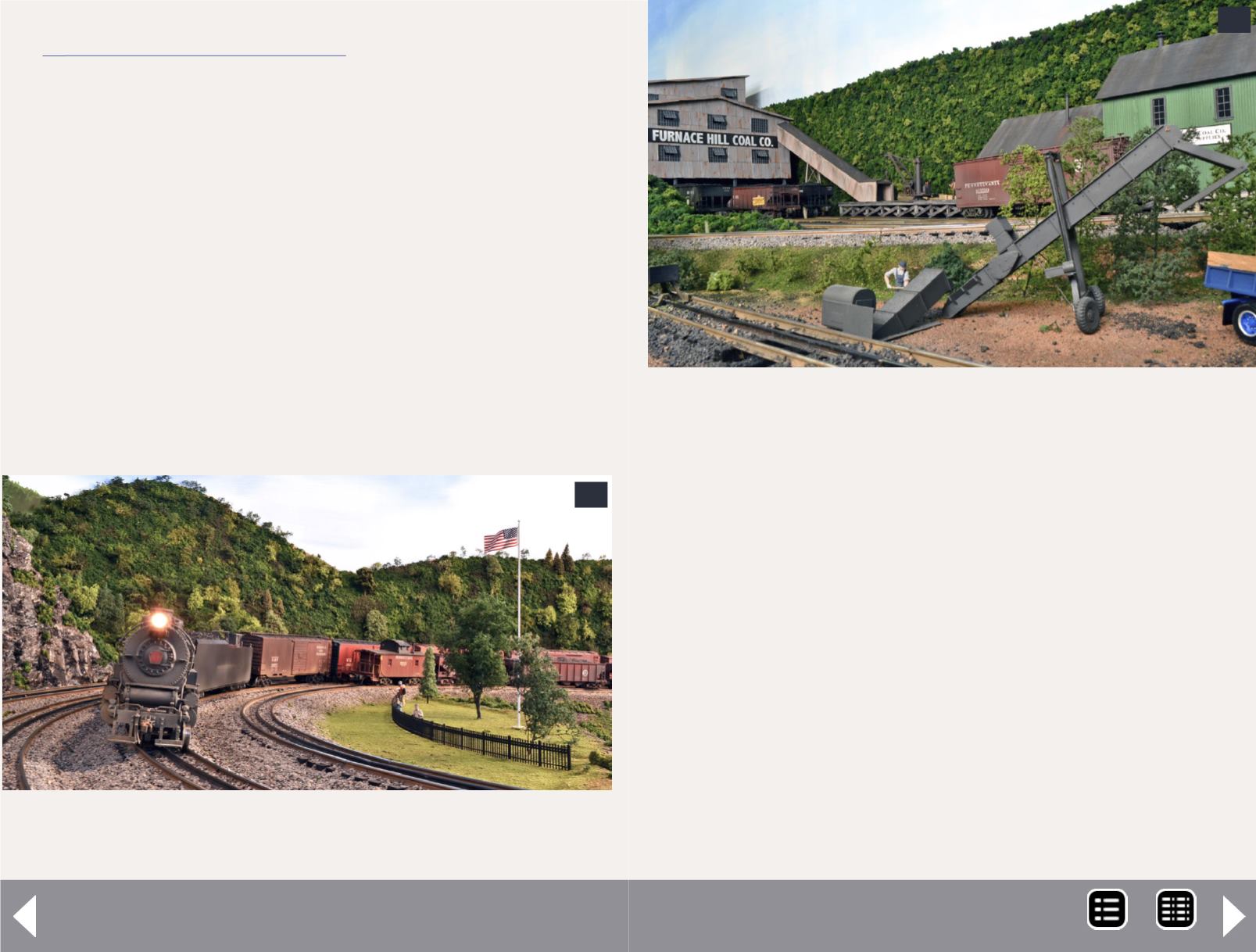
Operation
I designed the layout with future operating sessions in mind.
The purpose of the trains is to move freight and passengers in
a prototypical manner. During an operating session, through
trains traverse the mainline from staging to staging. Local trains
might originate in Annville Yard, run to one or more of the
other towns for some switching work, then return to Annville.
Over the course of a four-hour session, about 20 different
main line trains are run, along with three switching jobs within
yard limits. Including helper operation and a few locomotive
changes at Annville Yard, there are usually about 25 different
locomotives that are run during a session.
The movement of cars is determined using a commercial car-
forwarding program (RailOp) that runs on my home computer.
25: M1a 4-8-2 #6738 shows off some superelevated track as
she passes some railfans at Horseshoe Curve Park.
25
Pennsylvania & Western RR - 16
The software determines car routings, assigns cars to the
trains, and prints switch lists and instructions for the train
crews to use. During an operating session, the railroad has the
following “employees:”
Dispatcher
– Responsible for the flow of traffic on the railroad,
by coordinating the running of passenger, through, and local
freight trains according to the published sequence. The rail-
road uses a sequential schedule of trains with no fast clock.
Annville Yard Master
– Responsible for ensuring a smooth flow
of traffic into and out of the freight and passenger yards at
Annville. Access to the yard is under the Yard Master's author-
ity, as are all movements within the yard limits. The YM also
prioritizes switching moves for the yard switcher as needed.
26: The hopper spot at Lebanon Lumber and Coal is empty
at the moment.This is a good time to get a photo of the tipple
and office/supply (the green building) of Furnace Hill Coal
Co.The coal loader and all structures were scratchbuilt.
26
MRH-Mar 2014


